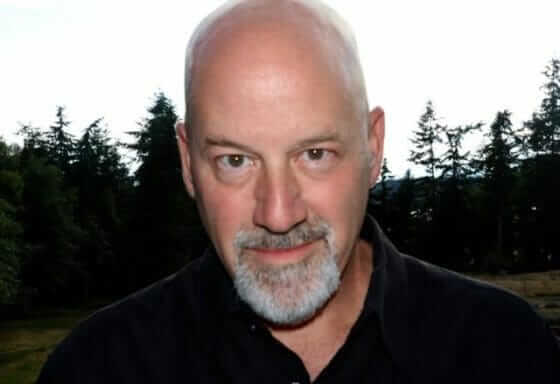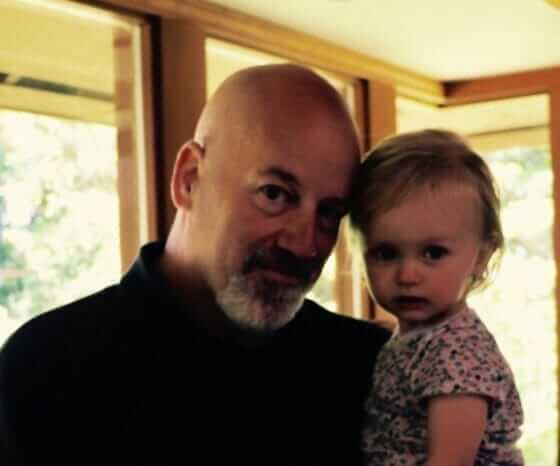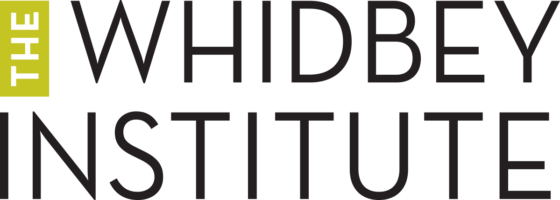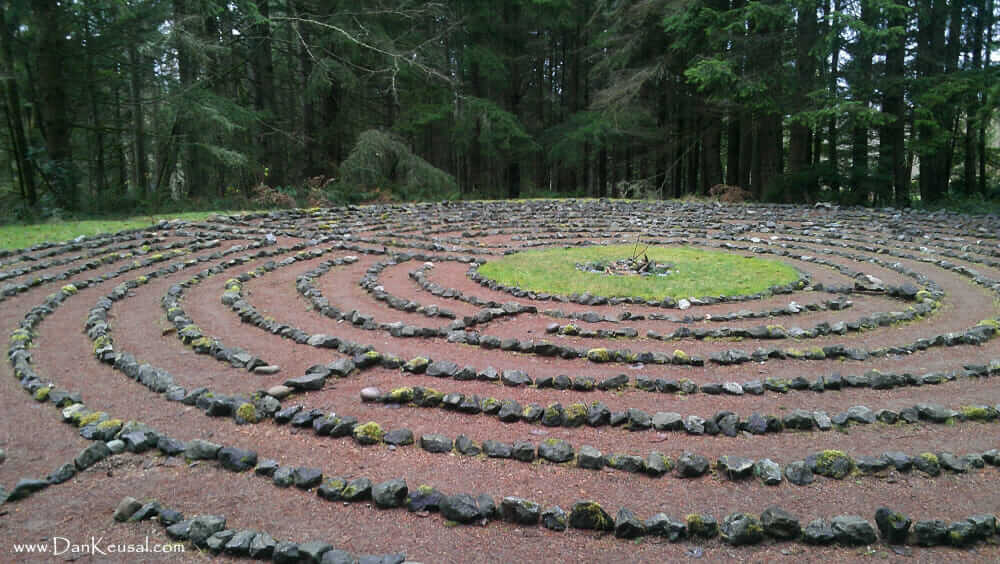I recently had the chance to sit down with my friend, mentor, and colleague Dan McKee to catch up, hang out, and talk about his upcoming personal and leadership development offerings at the Whidbey Institute. Here’s an excerpt from that conversation.—Marnie Jackson
Marnie: I’m familiar with your personal development work through Warrior Monk and Awakening Life and your organizational leadership development work through Deeper Currents. Do these two pursuits overlap?
Dan: They do overlap, in the sense that the common denominator in both are these beautiful human beings—anything but common—who carry a longing to be more whole, happy and useful . . . and who, for whatever reason, find themselves ready to take the risk to grow. So, in that, there are certain explorations and practices core to how we grow and develop that find their way into both pursuits.

In organizational work, it’s sometimes just not possible to go to the depth we can, on a longer timeline, with the personal work . . . but there’s a trade-off, in that we can still help the individuals grow and we can support them in evolving organizations.
In the projects we’re focusing on in Awakening Life, we’re seeking to better serve the people and organizations who don’t typically have a great deal of access to personal or leadership development. There’s a sweet spot there — people hungry to grow and grateful to be met with respect, and often very serious about helping others. I’m seeing more of a natural and service-based leadership emerge in these veins.
What is it about the combination of personal growth work with leadership development that holds promise for you?
Maybe it’s a bit simplistic, but I believe the leader’s primary tools are their mind, heart, generosity, and courage. Maybe their only real tools, really?
With real depth work we get to wrestle with what it takes to truly befriend those best-of human qualities which also characterize the best leaders—compassion, humility, longing, sacrifice, knowing our shadows, and forgiveness. From those qualities comes a more consistent ability to get outside of ourselves to support others, and less time spent taking ourselves so seriously. Integrating the mindfulness work gives leaders the ability to hold attention to what matters most.
High quality attention with warm presence and practical intellect are the leadership qualities I see in shortest supply these days.
The work that produces this is something that’s just not available in the framework of most leadership work. It requires experiential learning, engaging the emotions and soul as well as the intellect. Some human steeping and alchemy is then necessary—a few days of time in a nature-based container, with a mix of other brave and supportive souls, allowing integration in a way that’s transformational as opposed to incremental.
And, I really want to be clear that I’m not saying there’s not great merit in doing leadership development work—there is. We all know it’s needed now more than ever, and I know of great leadership development offerings here at the Institute—Powers of Leadership, for instance. That said, I’ve seen and heard over and over how important the deep, inward-focused personal development work is to leaders . . . how it brings a deep and unexpected power and effectiveness, supporting people in developing greater confidence and soul-satisfaction.
You’ve used the phrase “depth work” here, can you say more of what you mean and how it makes a difference?
It means that we’re willing to drop down below the surface of how we operate in our lives to look for the deeper and often hidden opportunities for healing and learning about our true selves. It usually means that something has happened in our lives or inside of us that tells us it’s time to start living more honestly and with less of the old stories and ways of being that may have served us to this point, but which we know in our gut won’t allow us to live into the more precious life we know is within reach. Sometimes that means facing old life events and unkind and limiting beliefs about ourselves that we’ve taken on.
In depth work there are often vulnerabilities, tenderness, and emotions to move into and through, and the most consistent rewards are greater self-acceptance, reclaimed authenticity, and inner peace.
“In depth work there are often vulnerabilities, tenderness, and emotions to move into and through, and the most consistent rewards are greater self-acceptance, reclaimed authenticity, and inner peace.”
In Warrior Monk, as you know, or in other work designed to go even deeper, it can take real courage. We want to make sure it’s safe, and give time to integrate what we open in ourselves. From there, whether in life or leadership, we get to show up much more authentically and emotionally accessible. More real, more trusting, more trust-able. More loving.
You’ve told me in the past that you and your fellow Warrior Monk Retreat facilitators each commit to your own personal growth and mindfulness practices throughout the year. Can you tell me if your own personal practices evolve or change through your experiences with the program?
My own personal practices, for the most part, have stayed consistent over time. I’m regularly inspired and challenged to continue my own work by putting myself in these circles, though. It seems that any time I hit a sort of plateau or get complacent, there’s some work I witness others doing that cracks my heart open in some new way or astounds me. Witnessing the courage of others, I lean into some new learning or healing for myself.
Can you give an example or two?
I’ve been both inspired and challenged over the last couple years by the work I’ve experienced from participants at both ends of the age continuum.
The intensity of some of the “youngers” for feeling better about themselves and their future, and to live in a more just society, motivates me to stay more consistently engaged and emotionally available and to lean into asking and challenging others my age to step up to do our part. This requires some stretching for me, and has me looking at some of my own shadows and personal mythology around being available and how I use the art of challenge in healthy or not so healthy ways.
I’m also seeing a lot of what I consider to be a holy struggle of “elders” wanting to find more peace and acceptance of their mortality, while also being of greater service to others. This has me facing the edges of my need for greater self-compassion, and for being more conscious about my own aging. I’m looking deeply at what it takes to become more useful to the younger generations, and that has me looking back—again—at what’s still unsettled in me about my earlier years.
Mostly, it comes down to being challenged to face my old stories about how much I can really love and give in order to be more useful, and how much I’m willing to let others in. This may just be the most worthwhile of holy struggles, and feels like an old friend.
I know that the Warrior Monk Retreat experience helped shift my own perspective and self-understanding in profound ways, and I imagine you may have heard similar feedback from others. Are there any anecdotes you’d feel comfortable sharing from others who’ve experienced the Retreat?
I’m blessed to hear often from people whom I’ve met in this work. It reminds me why I’m here and how we’re all connected. For the past several months I’ve been in regular contact with a woman who attended nearly 20 years ago and who is now in the process of dying. She’s doing it in the the most conscious and graceful and fun-filled way. She recently shared that part of what’s sustaining her now is having learned at her retreat to make peace—to, in her words, “tenderly love the parts of my self and early life like worthy children”. She shared that she’d previously thought she was destined to carry these—“at most, with resigned acceptance”—for the rest of her life.
A young man recently sent a picture of himself with children he’s working with in a village in Africa. A beautiful and wild young man, he’s totally driven by his mission to serve others and to have fun doing it. He shared a recent realization—that he was there because the Warrior Monk Retreat had allowed him to learn how much personal leadership power he has to make a difference for those around him, and because of the way his fellow Warrior Monk participants had really seen and blessed him.
I don’t know if this qualifies as an anecdote, but his sharing reminded me of one of the more consistent things I hear . . . gratitude for the other participants, and acknowledgment of how much the love and attention and safety of the ‘container’ or ‘community’ facilitated their work. I’ve never seen anything like it in all the work I’ve been part of. The intentionality, presence, vulnerability, and courage people bring to this training really make it what it is. It astounds me every time.
“The intentionality, presence, vulnerability, and courage people bring to this training really make it what it is. It astounds me every time.”
I know you have been holding Warrior Monk Retreats around the world for many years, and that the quality of the container—in this case, the Chinook land—is vitally important. Can you share more about what this land makes possible, or how it serves to hold the work?
You know, I’m at a loss for how to speak to that in a way that seems appropriately honoring of this place. By place, I mean the land as you note, but I also include that amorphous entity we know as “the Whidbey Institute” in “place”. It’s become the norm to see people in tears when describing how his place nurtured their work or helped to free something wounded or stuck in their soul.
Personally, I’ve been hugely blessed—someone asked me at the recent Gala how many days and nights I’ve been here over the years with my work, and I realized it’s been close to six months out of my life. I still get surprised by how much I’m moved and open up more each time I arrive on the land early with the retreat staff.
It’s really a testament to you all on staff, which I consider the first circle, the participants being the inner core and the community being the second circle—that support this place. The power of this place to heal pain and empower personal mission is stronger every year, and I believe it’s because of those who keep it energized and pointed toward purpose.
“The power of this place to heal pain and empower personal mission is stronger every year, and I believe it’s because of those who keep it energized and pointed toward purpose.”
I expected the Warrior Monk Retreat to be solemn, serene, and dignified. It was all those things . . . and it was also challenging, fun, and silly. Without giving away all your secrets, can you express a bit of what makes Warrior Monk different than your average mindfulness retreat?
I don’t really consider Warrior Monk a mindfulness retreat. While the meditation and mindfulness practices have been a foundational part of Warrior Monk for 22 years, they take hold because they’re part of a larger integrated experiential approach pointed toward making our whole-life work—whatever that means to each of us. When we marry these practices, over several days, to the release of old pain and limiting beliefs, and at the same time welcome in greater self-acceptance and clarity of purpose, make clear choices on how to live . . . that all conspires to have us become more present to and with who we really are.
For me, mindfulness is this intersection, and it’s not always calm and we don’t always have it together there. Presence has heart and curiosity and emotions and it makes space for the whole mix of our brilliant and sometimes messy humanity.
As I’ve watched the American-ized mindfulness industry grow, I worry that we’re beginning to mistake reducing stress with time-outs for actually changing our lives. The pace of life and level of distraction addiction, the lessening of meaningful relation and depth . . . it’s all becoming too great to offset with time-outs and quick-pick practices. I don’t believe we can have it all. Lately I’ve been hearing in my head the quote from Thoreau—“The cost of anything is the amount of our life we exchange for it.” I think it’s helpful to get really honest with ourselves about how much we truly want what it is that we think mindfulness will bring to our lives, and ask what we may be willing to give up or let go of to get it.
Whatever that is, it seems to often require some devotion to surveying the current inner and outer landscapes of our lives. As the saying goes, “If you want to change your life, you may have to change your life.” Most of us know when we’re ready by the increasing of both the dissonance that wears at our heart and the siren song of longing that grows louder from somewhere even deeper than the heart.
“Most of us know when we’re ready by the increasing of both the dissonance that wears at our heart and the siren song of longing that grows louder from somewhere even deeper than the heart.”
For me, there’s a sweetness in knowing that the original meaning of the Sanskrit word for mindfulness is, “to remember”. If there’s anything I want for people who summon the courage to step into this work, it’s the ability to consistently pause and remember who they are and how much they matter . . . in their wholeness and brokenness, with their imperfect usefulness, being both loving and lovable.
I imagine all this personal growth work has been good for you. Are you perfect yet? (Laugh)
Yikes, that’s either the scariest or funniest question I’ve ever been asked in an interview! Or both. I come from the leadership school of, “we teach that which we most need to learn.” I wonder sometimes how much more . . . let’s just say, “far from perfect ” . . . I’d be without having been in in well over a hundred such retreats! One of my daughters asked me once, as I was going into another retreat, “gee Pop, retreating again? When do you hope to advance?” I guess I’m sticking around for hope of advancement!
What are you most passionate about?
Besides my 21 month old granddaughter? Younger people, from late teens to early 30s, getting a chance to deeply discover, heal, and accept themselves and to catalyze their authenticity into a practical and other-focused sense of direction and purpose. Then, there are people who are in their 40s to 90s doing similar self-discovery that allows them to more fully serve, feel useful, and mentor younger people. To that end, I’m convening a lively, wild, and experiential summit of such youngers and elders to collide here at the Whidbey Institute in April of 2018.
What question are you asked most often about the work you do?
From people who’ve not yet attended the work it’s usually about where did this kind of work come from, how did I learn to lead it, etcetera. With people who’ve experienced it, it’s often how did I get so lucky, to spend so much of my life with such amazing people.
What question do you wish I’d asked?
To see pictures of my granddaughter, Esme. Ready?

Upcoming opportunities with Awakening Life
Warrior Monk Refresh—Graduates Retreat
November 16—19
Go back to your life with greater presence and more empowered to make the choices that better align your life with how you truly wish to live—wholeheartedly, mission-strong, and with more joy.
Warrior Monk Threshold Retreat
December 29—January 2
This powerful experiential retreat is designed to bring about greater depth and integration of our spiritual, emotional, and psychological development. Start the New Year with intention and grace!
Mentorship and Next Generation Leadership Summit
April 11—15, 2018
A gathering of two groups with parallel and conjoined purpose. One: twenty-five 18 – 35 year olds seeking greater self-awareness and purposeful leadership. Another: twenty-five older adults seeking the greater self-awareness, purpose, and tools to become more useful and empowering mentors.

